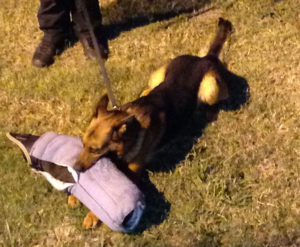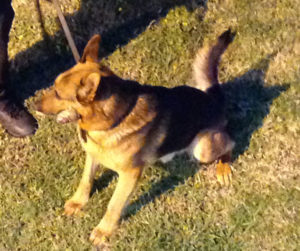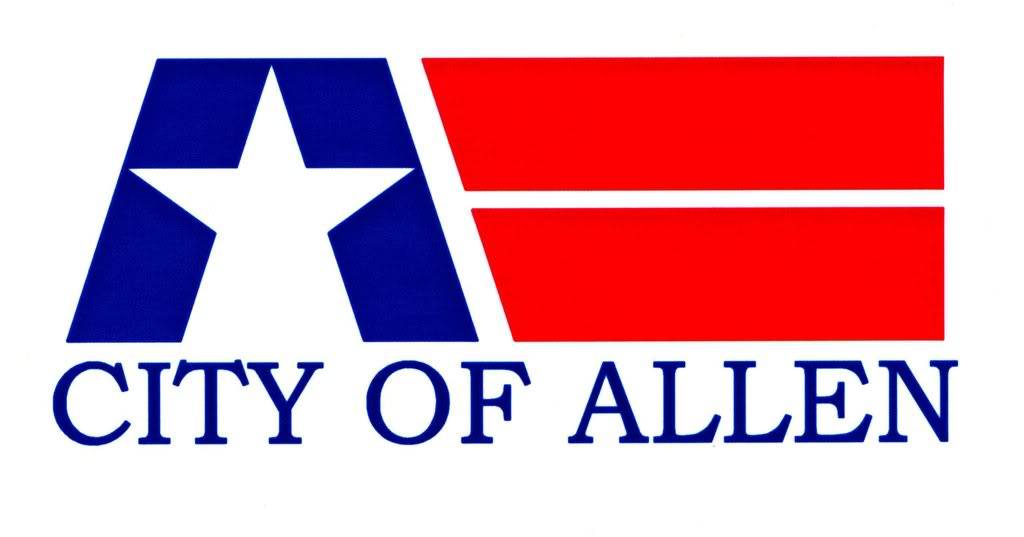This week was the K-9 unit. We met at the City of Allen K-9 training facility. The evening was a series of overviews and demonstrations. The weather cooperated for what was an enjoyable evening outside before the rains came.
The evening started out with an overview of the primary functions of the K-9 units. The dogs are trained in two primary lines of work: Narcotics and Search/Pursuit. We then saw a series of demonstrations of each type of work.
Within the Narcotic Search overview, we learned how the dogs are trained. The dogs are taught to find the smell of the various narcotics. When the dog successfully finds the narcotics, they are rewarded with time to play with a dog toy. The handler then keeps working with the dog in creating more difficult hiding areas. Over the time, the dog equates praise and play time with finding the narcotics. This motivates the dog to find the narcotics. The dogs are also taught that they do not get rewarded for false positives.

City of Allen Police Dog with the Bite cover after apprehending a suspect during a training exercise.
For canine dogs to be certified for Police work they must have a high hit rate of identifying narcotics and there actually being narcotics. The canine dogs that currently work in the City of Allen are consistently in the high 90’s. If they indicate narcotics, the police know they are present.
The handler and his canine then demonstrated by finding an item that had a narcotic smell. The dog made very quick work of it.
The second area of K-9 responsibility is Search and Pursuit work. This involves many different duties such as building searches, area searches, criminal tracking, criminal apprehension, article searches and locating lost or missing children. This is where the canines are able to use their advance senses of hearing, sight and smell.
The officer explained how the dog uses their smell to identify human smell from the surrounding areas. To demonstrate this, one of the officers threw his car keys into an open field. The handler and his dog then searched the field and found the keys from the scent. (No, I don’t think the Police will help you find your lost car keys.)
The Police Officer then discussed the training aspect of criminal apprehension. The dogs are taught to bark at, but not attack a suspect, as long as the suspect is not threatening. If a Police Dog approaches you barking, you are to stop, stand still and raise your arms. The dogs are trained to bark but not attack. The handler can issue a command and the dog will come back and lay next to the officer. If the suspect makes a threatening move or if the officer issues the command, the dog will apprehend the criminal.
During the demonstration, it was amazing how fast the dogs are. The dog went from a watchful position to apprehension mode quickly. The suspect made a swing at the handler and the next second the dog is on the suspect. You do not want to mess with a canine unit.
Next week, we will be studying profiling, suicide prevention and crisis management. This week should only be classroom work with no demonstrations.






No Comments